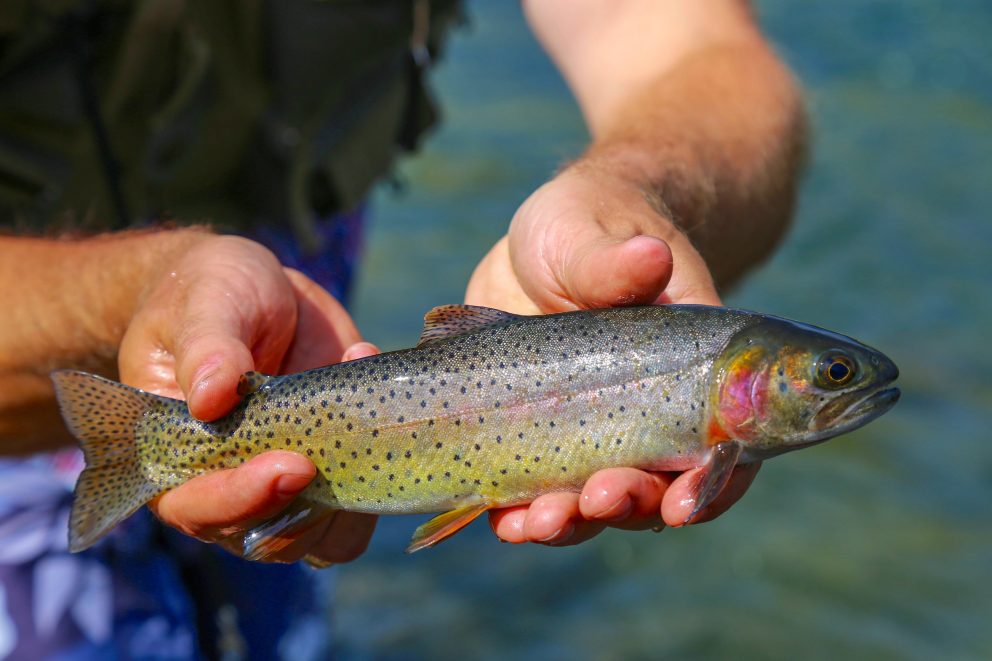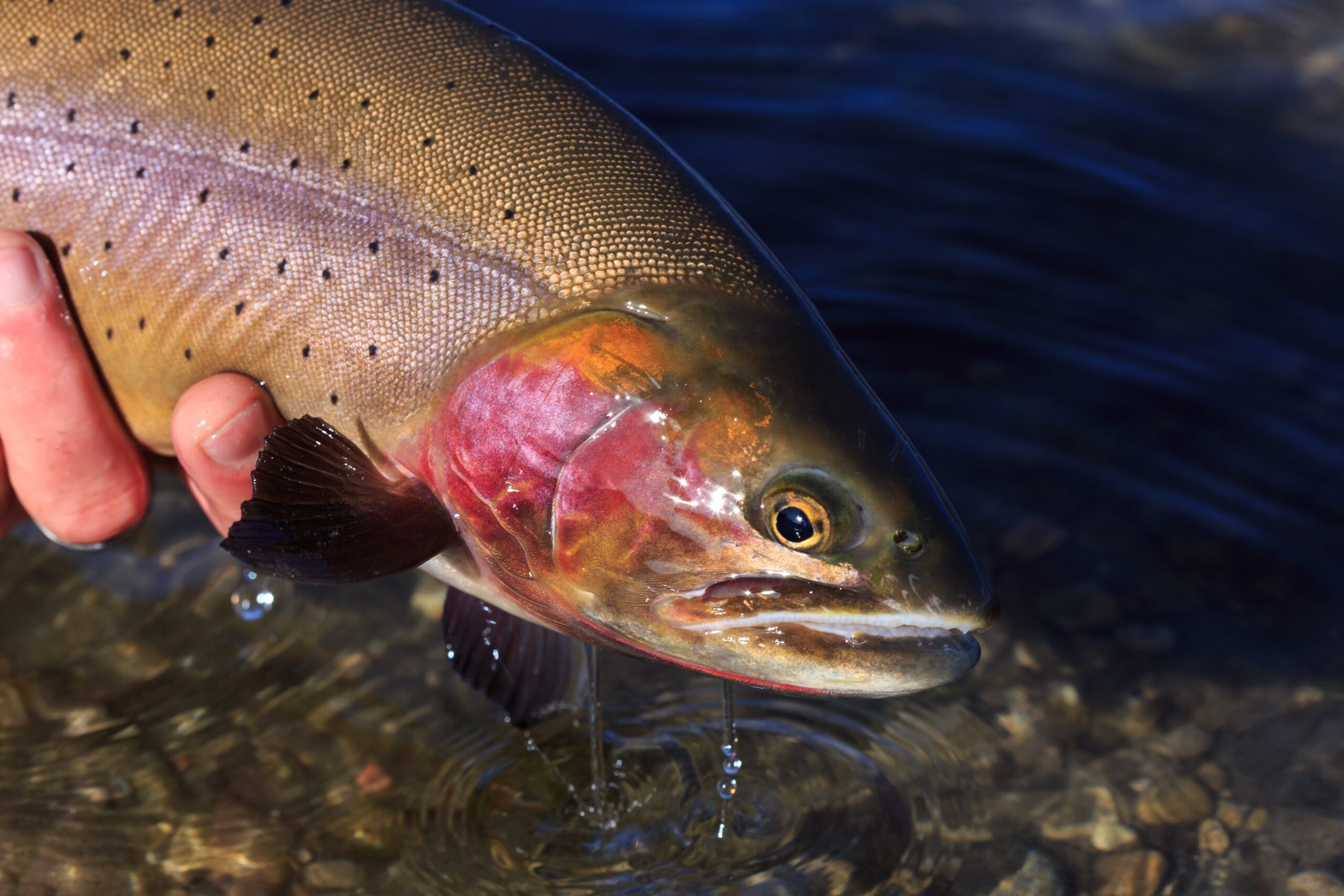- SCIENTIFIC NAME
- Oncorhynchus clarkii bouvieri
- CLASSIFICATION
- Fish
- LIFE SPAN
- 7-8 Years
- SIZE
- 7-20” | 1-3lbs
- STATE CONSERVATION STATUS
-
- Priority Species
- FEDERAL CONSERVATION STATUS
- Least Concern
- GAME STATUS
- Game
- Washoe
- Humboldt
- Pershing
- Churchill
- Mineral
- Lyon
- Douglas
- Carson City
- Storey
- Elko
- Lander
- Eureka
- White Pine
- Esmeralda
- Nye
- Lincoln
- Clark
Habitat & Range
Yellowstone Cutthroat Trout historically occupied about 61 lakes and about 17,800 miles of stream and river habitat throughout the Greater Yellowstone Ecosystem and the Snake River watershed. In Nevada, Yellowstone Cutthroat Trout (YCT) are only found in the Goose Creek basin that occupies a small, northeastern portion of Nevada. All property along Goose Creek and tributaries is privately owned.
Threats
- Habitat Degradation
- Habitat Fragmentation
- Water Diversion
Natural History
Yellowstone Cutthroat Trout are the most prolific native trout to Yellowstone Park and prior to the Euroamerican settlement, they were the dominant fish species. They are now an important food source for approximately 16 bird species, mammals, otters and mink. Typically, a pacific drainage species, the YCT has traveled across the Continental Divide into the Atlantic drainage. Although their primary habitat remains unaltered, nonnative fish species are a serious threat, as predators as well as hybridized breeding. The Yellowstone Cutthroat needs cold, clean water in streams and lakes and can be found in the Snake River in Nevada as well.
Fun Facts














